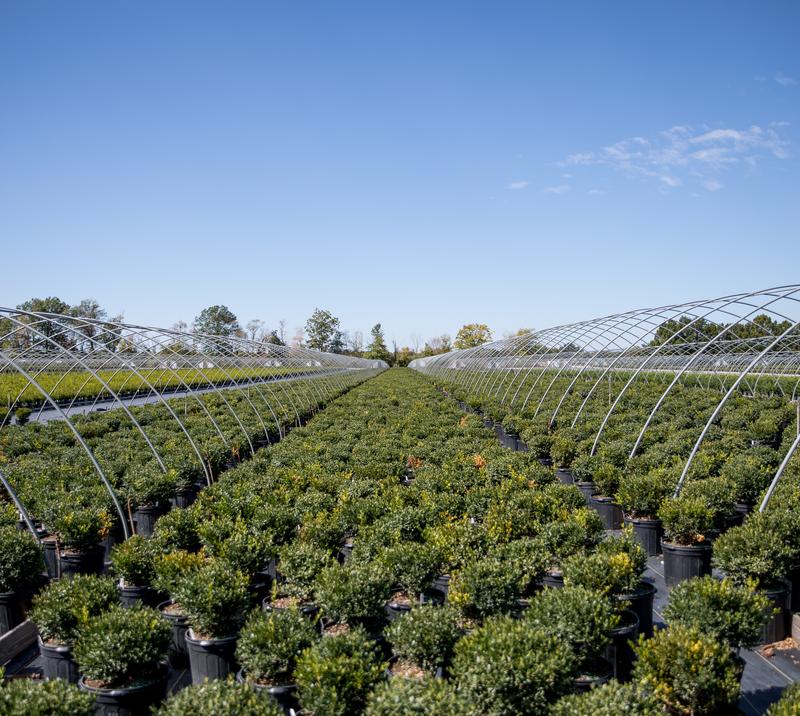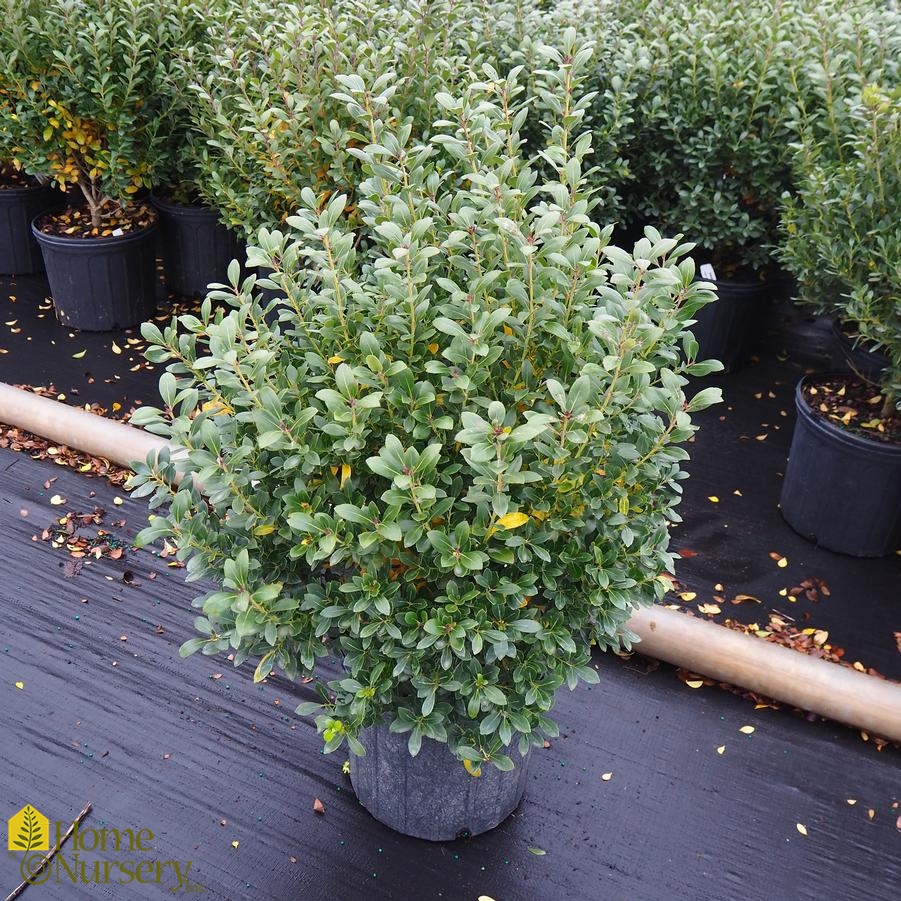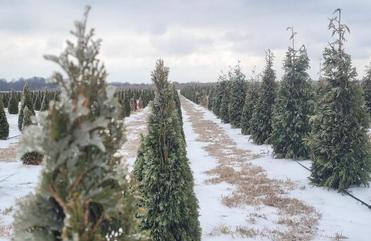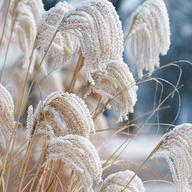5 Great Boxwood Alternatives
Boxwoods are incredibly popular in the landscape, but could the recent appearance of boxwood blight threaten their place in our gardens? Only time will tell how devastating boxwood blight will be to the boxwood population. Until then it might be good to consider these 5 great boxwood alternatives that are not susceptible to the fungal pathogen that causes boxwood blight.

Boxwoods have become a staple in the landscape industry. You can hardly find a neighborhood or shopping center without a single boxwood in the landscape. Why do people like boxwoods so much? Maybe it's because they are a low maintenance plant with year-round interest. They are also a diverse plant since they can be sheered into formal spheres or hedges. It doesn't hurt that the deer tend to leave them alone. The uses of boxwoods are endless; however, a new complication has arisen for the boxwood population.
Boxwood blight, a fungal pathogen, was discovered in Connecticut in a residential landscape in 2011. It quickly spread to other states and after trials it was discovered to infect Pachysandra terminalis as well. States with confirmed infections of boxwood blight are Ohio, Pennsylvania, New York, Virginia, North Carolina, Maryland, Oregon, Connecticut, Massachusetts, and Rhode Island. This list is growing constantly, which makes it hard to say exactly how many states boxwood blight has made it to. Just a few months ago, boxwood blight cases were confirmed in Indiana in October of 2018 and in Michigan in December of 2018. Boxwood blight can be devastating to boxwood crops since the disease is contagious and easily spread between susceptible plants. The tale-tell signs that a boxwood has been infected are black spots on the leaves followed by black stem cankers and defoliation of the plant. There is no treatment method once the plant is diagnosed, there are only methods to try and prevent an infection. Plant pathologist recommend buying susceptible plant material from trusted growers only. If you are buying boxwoods from a gorwer, you should ask them what methods they are using to prevent the spread of boxwood blight. Sanitation practices are very important. At our nursery, sheers are cleaned in between each trimming. We also require anyone who enters a house with boxwoods to spray their boots with a Lysol disinfectant spray when they enter the house and when they exit the house. If boxwood blight does happen to infect a plant, the plant needs to be burned so the fungus can not spread to other susceptible plants. Perhaps the best way to avoid the headache of boxwood blight is to plant alternative plants that are not susceptible to the fungal pathogen.
- Ilex glabra
- Ilex crenata
- Thuja occidentalis
- Ligustrum spp.
- Ilex x meserveae

Ilex glabra is an evergreen holly commonly called inkberry. This plant is a great alternative to a boxwood since it looks and behaves similarly. The leaves on an inkberry are small and elongated, giving it the illusion of a boxwood from a distance. Inkberry also has a similar habit to boxwoods and maintains a somewhat rounded habit without sheering. Both inkberries and boxwoods are deer resistant and ideal for creating a hedge. As an added bonus, inkberries grow faster than boxwoods giving you the hedge you want faster. Additionally, inkberries are a native plant making them an even better alternative to the non-native boxwood. At Home Nursery, we currently grow three varieties of inkberries including: Ilex glabra ‘Nigra,’ Ilex glabra Gem Box® (pictured to the left), and Ilex glabra Strongbox™. ‘Nigra’ is the larger of the three measuring about 3-4’ tall and wide. It has small white flowers in spring followed by little black berries giving it more seasonal interest. If you are looking for something smaller, consider Gem Box® or Strongbox™, both of which are selections from Proven Winners®. These two both measure 2-3’ tall and wide and maintain a dense rounded habit. Strongbox™ is supposedly less rounded and more elongated than Gem Box®. Strongbox™ is a new plant for us and we are excited to see how it compares to both Gem Box® and ‘Nigra.’

Another great boxwood look-alike is Ilex crenata commonly called Japanese holly. This is an evergreen shrub with rounded glossy green leaves. Similar to boxwoods, Japanese holly are deer resistant and make an excellent hedge. We grow four varieties of Japanese holly at Home Nursery, two columnar varieties, and two mounded varieties. The two columnar varieties, Ilex Patti O™ and Ilex 'Sky Pencil,' would be great replacements for the columnar boxwood ‘Graham Blandy.’ Of the two, ‘Sky Pencil’ is the larger getting up to 10’ tall and 3’ wide, while Patti O™ only gets 4’ tall and 2’ wide. If you want something for a container, Patti O™ would be the better option, but if you need a tall hedge, ‘Sky Pencil’ is the way to go. Both of these columnar varieties give the landscape a formal look and are a great choice to frame doorways or other focal points. The two mounded varieties of Japanese holly are ‘Green Luster’ and ‘Soft Touch.’ ‘Green Luster’ (pictured above) is the larger of the two getting up to 4’ tall and 5-8’ wide which makes it perfect for a small hedge. Meanwhile, ‘Soft Touch’ is only 2-3’ wide and tall. It is aptly named for its unique almost soft texture. This variety is great if there are lots of children around because with its texture and name people can’t keep their hands off of it. As an added bonus, both of the mounded varieties produce black berries that attract birds.
.jpg?width=200&name=Anna%27s%20Magic%20Ball%20(1).jpg)
While American arborvitae do not have a similar leaf shape to boxwoods, there are several varieties of Thuja occidentalis that have the nice rounded habit that is popular with boxwoods. Thuja occidentalis is another great choice if you are looking for a native evergreen species to plant instead of the non-native boxwood. We grow five varieties of globe shaped arborvitae that would make excellent alternatives to a boxwood. Tiny Tot™ is one of the smallest at only 1-2’ tall and wide. It is rather cute and perfect for a tight space in the landscape. ‘Hetz Midget’ and ‘Little Giant’ are a little bit bigger averaging out at about 4’ tall and wide for both. ‘Hetz Midget’ grows wider than it grows tall making it a good option for rock gardens while ‘Little Giant’ has ideal structure for a small hedge. However, if you are looking for a boxwood alternative with a bit more color, arborvitae have options for that too! Anna's Magic Ball® and Fire Chief™ are great choices if you want something with vibrant year-round color. These two cultivars are incredibly popular with our customers, and if you see them you will know why. Anna's Magic Ball® (pictured above) is such a bright shade of yellow that it almost seems to glow. Additionally, it’s small size, only about 1’ tall and wide, makes it perfect for a tight space in the landscape. Fire Chief™ is blazing shades of orange, yellow, and green and turns a lovely coral red in the fall. Fire Chief™ is a bit larger, growing to 2-4’ tall and wide.
.jpg?width=200&name=Sunshine%20(2).jpg)
Privets make excellent deer resistant hedges, making them a great alternative to boxwoods. However, these plants are semi-evergreen meaning their ability to hold on to their leaves in the winter varies based on geographic location, placement in the landscape, and cultivar. Generally, in the Midwest these plants are deciduous. Even so, a great cultivar is Ligustrum x 'Vicaryi' which is commonly called golden vicary privet. It is on the larger side, getting 6-12’ tall and 7-10’ wide. It also grows much faster than a boxwood would. The foliage is bright yellow and obtains a pink blush in the fall that deepens to purple in the winter. This shrub tolerates sheering into a formal hedge but can also be left un-sheered for a more low-maintenance hedge. Ligustrum ‘Sunshine’ is a non-invasive cultivar that might be a better option if you are concerned about invasive species. ‘Sunshine’ is much smaller than golden vicary at 3-6’ tall and 3-4’ wide. The foliage is a similar bright yellow, but with much smaller leaves giving it a finer texture and better resemblance to boxwoods. ‘Sunshine’ also develops the lovely pink blush color in the fall (pictured above). Another option if you want something with a columnar habit is Ligustrum Straight Talk™. This cultivar can get up to 12’ tall and 2’ wide and unlike the other privets mentioned, it has deep green foliage.
.jpg?width=200&name=Castle%20Wall%20(1).jpg)
If you are looking for something with a little bit more winter interest, a more traditional blue holly might be the way to go since they have a great onset of red winter berries. Ilex x meserveae 'Blue Princess' and ‘Blue Prince’ are reliable cultivars of blue holly with a glossy blue/green evergreen foliage. These shrubs can get about 10’ tall and wide. In order for berry production to occur, you will need 1 or 2 male plants for every 5 females. The berries attract birds and provide a source of food for them in the cold winter months. Proven Winners® has two blue hollies called Castle Spire® and Castle Wall® of which Castle Spire® is the berry producing female. As added winter interest, the foliage of the Castle Wall® develops a nice purple tint in the winter (pictured above). These cultivars are slightly smaller at about 8’ tall and 3-4’ wide. They also have a more formal pyramidal habit. All of these options of blue hollies make great hedges and are subsequently a good option to take the place of boxwoods.
These are just a few options to use instead of boxwoods, there are many many more shrubs that make great alternatives to boxwoods. If boxwood blight is giving you a headache, don’t let it! There are so many other valuable plants that can be used if your boxwood becomes infected with boxwood blight or if you choose to plants something else before you even come in contact with the disease.
Works Cited
Bach, Casey. “Alternatives to Boxwoods and Traditional Dwarf Hollies.” Randy’s Perennials Water Gardens, 30 May 2016, randysnursery.com/alternatives-to-boxwoods-and-traditional-dwarf-hollies/.
“Boxwood Blight Found in Michigan.” Farm and Dairy, 12 Dec. 2018, www.farmanddairy.com/news/boxwood-blight-found-in-michigan/527740.html.
“Gem Box Ilex Glabra.” Proven Winners, Grand Rapids, MI, www.provenwinners.com/images/gem-box-ilex-glabrajpg.
“Ilex Crenata Green Lustre.” Marshall's Riverbank Nurseries, Inc., Salisbury, MD, www.mrnurseries.com/product/ilex-crenata-green-lustre/.
Sharp, Jo Ellen Meyers. “Deadly Boxwood Blight Found in Indiana.” Indy Star, 25 Oct. 2018, www.indystar.com/story/entertainment/2018/10/25/hoosier-gardener-deadly-boxwood-blight-found-indiana/1754110002/.

